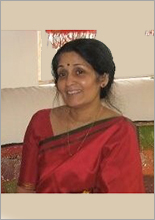Gender and Education in the Arab Region: Reduced Gender Parity up the Education Ladder – Part II
As noted in Part I of this blog series, gender disparities in the Arab region have been reduced, but not eliminated. The second part of this blog reflects current trends in gender parity in secondary and tertiary education in addition to exploring indicators and factors that demonstrate higher educational achievement for girls who do attend school.
While the greatest achievements have been noted in a Gross Parity Index (GPI) of 0.95 in 2011 (up from 0.88 in 2005) in primary education across the region, gender parity remains a problem at all other levels of education, including pre-primary education. This achievement is demonstrated as both Jordan and Qatar reached the Gender Parity Goal for primary and secondary education by 2005. Despite this progress in the areas of access to education and participation in primary education, more than 6 million children are out-of-school in the region. Not unexpectedly, young girls have a higher probability of being excluded from school. Three out of five primary school age children who are not enrolled in school are girls.
Historically, achieving gender parity in secondary education has remained much more challenging. As far back as 2005, two thirds of the Arab states had achieved gender parity in primary education or were close to achieving it, compared with a minimal 35% achievement rate in secondary education. Gender disparities in secondary education show great variation. Interestingly, nine countries had a GPI in favor of girls in 1999 (Algeria, Bahrain, Jordan, Kuwait, Lebanon, Oman, Palestine, Qatar and UAE) and in four of these countries the comparative disparities grew larger by 2011. These were Algeria, Jordan, Lebanon and Palestine. Similarly, Tunisia reflected a move from a GPI with a disadvantage for girls to a GPI in favor of girls. In three countries (Mauritania, Morocco and Saudi Arabia), GPI improved for secondary education, but remains below 0.9. Countries like Djibouti and Yemen still registered low GPIs of 0.76 and 0.63 respectively in 2011. In 2011, the GPI for the entire region for secondary schooling was 0.93.
Despite these achievements, the pace and direction of reducing gender disparities in secondary education has slowed in the region. Some inter-country variation exists due to greater participation by girls in countries like Mauritania, Morocco and Yemen, but overall trends for female enrollment are still low. In Djibouti disparities against girls increased, and in Kuwait, Palestine and Tunisia the situation of boys has worsened since 2000.
Gender parity in tertiary education was not observed in any of the countries. Of the 22 countries in the region, two countries did not have data on tertiary enrollment. Thirteen countries showed that more women than men were enrolled in tertiary education. In some cases women made up more than two thirds of enrollment. In seven countries (Comoros, Djibouti, Egypt, Iraq, Mauritania, Morocco and Yemen), women’s enrollment was much lower than that of men.
An interesting trend is also seen in the case of grade retention in the region. When girls have access to education and school, they perform better than boys. The percentage of girl repeating a grade in primary and secondary school was lower than that for boys. World Bank reports show that, in contrast to access and completion data, the percentage of girls meeting basic learning levels is higher than boys in all nine Arab states for which data were available. In Saudi Arabia, at the primary school level, a large disparity was seen with more than half the boys’ demonstrating poor learning outcomes as opposed to less than one third of girls demonstrating similarly poor outcomes.
Further, Girls were found to learn more than boys at secondary education levels as well. In nine of the eleven Arab countries for which learning outcomes were available, a higher proportion of girls were learning than boys. In four Arab states (Bahrain, Jordan, Oman and the United Arab Emirates), the share of boys demonstrating poor learning outcomes was 15% greater than that of girls.
Specialists have suggested that female teachers help to assure access to education for girls. However, data on female teachers remains difficult to track. In the few countries that had data, it showed that the proportion of female teachers in pre-primary education was high, but this proportion was lower in primary education and accounted for less than half at secondary level and fell to one one-third at the tertiary level. In some countries like Djibouti and Mauritania, the percentage of female teachers was extremely low for primary education as well. Further exploration might look toward the apparent positive correlation between falling GPI rates and the falling proportion of female teaching staff as students progress up the educational ladder. This research might lead to some interesting findings on how to increase parity through increased female participation in higher education.
Read Part I
Rema Nair Balasundaram is a professional in the area of education in Asia and Africa. She has worked extensively, leading operational teams, in the education sector for the World Bank, UNDP, ADB and the IFC. She has led delegations and task forces for technical assistance in Asia and Africa, focusing on primary education, secondary education and tertiary education over the years. She has also led operations and evaluations of Joint, Global and Regional Programs in the Education sector in Asia and Africa. She has graduate degrees in Development management, and Food Science and Nutrition, and a major in Public and Economic Policy.
